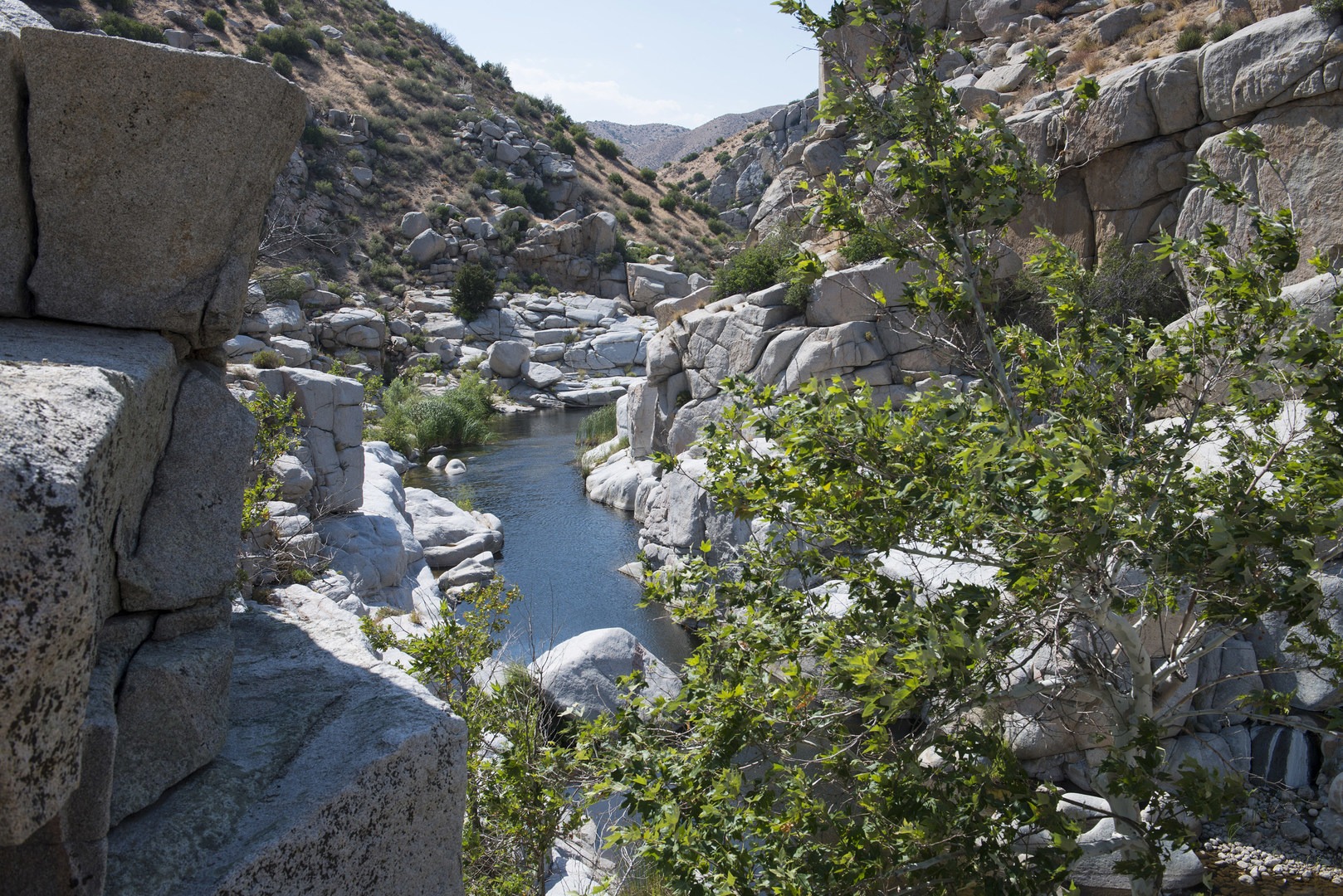Despite the intense summer heat, water continues to flow in Deep Creek all year long. The hike into Deep Creek Canyon wanders through the San Bernardino National Forest for approximately 7 miles, beginning at Bowen Ranch and heading southwest. It is part of the Pacific Crest Trail. Adventurers who don’t mind a crowd will enjoy pausing at the Deep Creek Hot Springs for a quick dip, but the Warm Springs further down the trail are considerably less crowded. This is in large part because the water is tepid rather than hot, but the relative seclusion is worth it. The trail swings northward at the hot springs and then dips down to the southeast before depositing hikers at the warm springs.
Hot springs visitors should be informed of posted restrictions and warnings specific to the area. Deep Creek Hot Springs are known to contain primary amoebic meningoencephalitis, a rare disease that can sometimes cause death. As the spring's warm waters flow through contaminated soil, the disease can be transmitted to the soaking pools. Visitors are advised not to submerge their heads in the hot spring's waters or drink any water from nearby. Rattlesnakes are also found in the area and visitors should exhibit sufficient caution, especially around rocks and outcroppings.
This forest has a rich history and a wide variety of flora and fauna. After gold was discovered in the area in the mid-1800s, people swarmed to the San Bernardino Mountains. The area was quickly industrialized, which negatively impacted the air and water quality. In 1893, President Benjamin Harrison established the San Bernardino Forest Reserve in hopes of preserving the land. Over the years it has been called by different names, but today it is known as the San Bernardino National Forest. This forest contains four grand mountain ranges (the Santa Rosa Mountains, the San Jacinto Mountains, the San Bernardino Mountains, and the San Gabriel Mountains), and a plethora of plants and animals, many of which are endangered, including the southwestern Arroyo toad that lives in the creek's sandy shores. While some parts of the forest remain in its natural state, humans have continued to urbanize much of it for more than a century. In addition to thousands of types of plants and hundreds of species of animals, the San Bernardino Mountains host nearly 44,000 people in a given year. Visitors can minimize their impact on the forest by making sure to pack out all trash, dispose of human wastes properly, especially around the hot springs, and adhere to Leave No Trace principles in general.



















Comments
Sign In and share them.